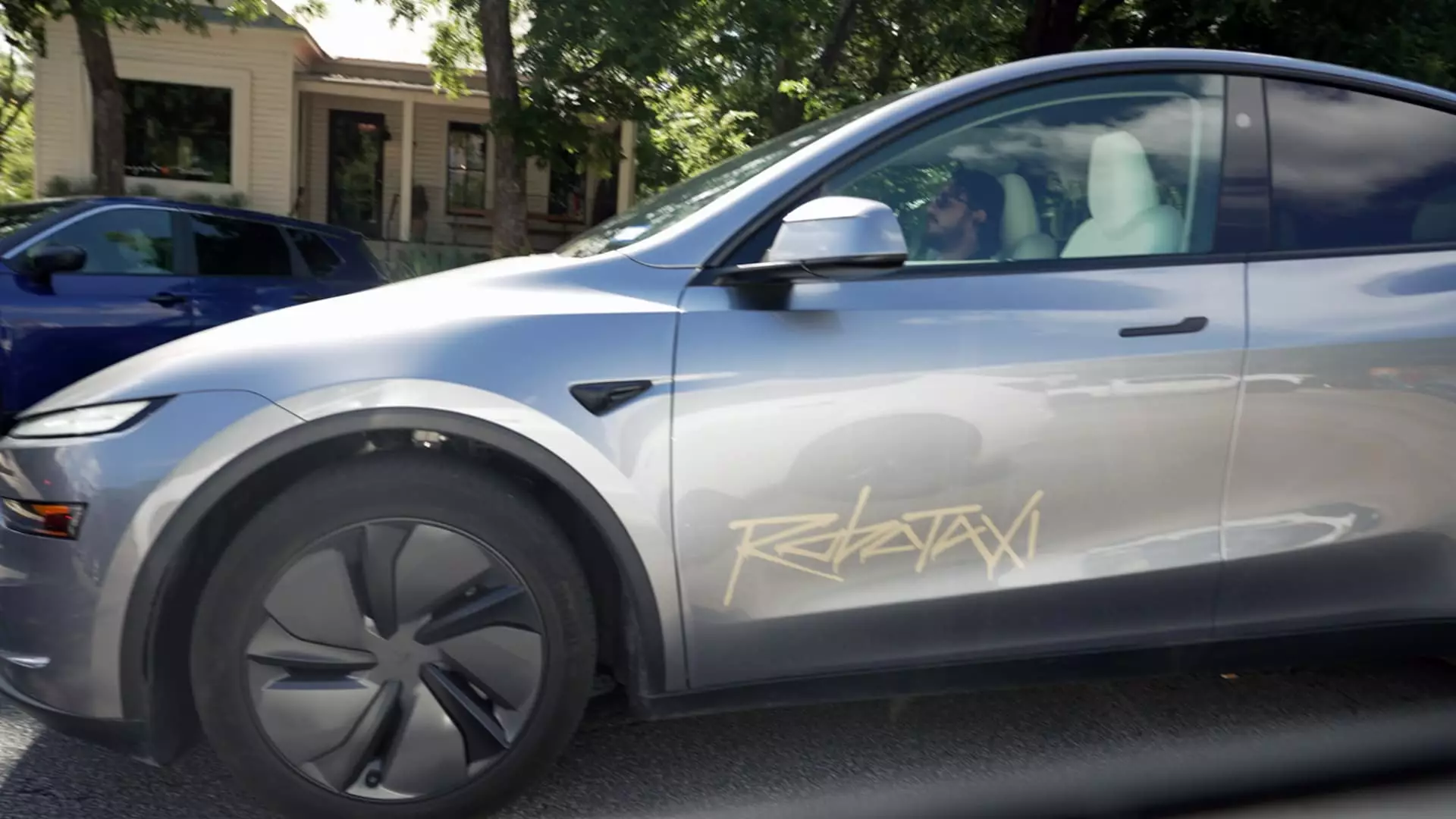Tesla’s entrance into the autonomous vehicle arena, particularly with its ambitions to deploy Robotaxis in Phoenix, symbolizes a desire to reshape urban mobility. Elon Musk’s vision of a fleet of fully autonomous taxis driven primarily by cameras rather than expensive sensors like lidar is ambitious—almost utopian. Yet beneath this sheen of innovation lies a series of stark realities that cast doubt on the actual readiness and safety of these technologies. While Musk’s rhetoric paints a picture of a near-future where robots replace human drivers, the actual performance and regulatory hurdles suggest a different story.
Tesla’s strategic pivot to Arizona, following pilot efforts in Texas and ambitions in California, is less about innovation and more about deflecting regulatory scrutiny. Arizona’s more lenient stance towards testing autonomous vehicles makes it an attractive sandbox, but this environment does not inherently guarantee safe or reliable operations. Moreover, Tesla’s history in this arena is marred by questionable safety claims and a pattern of rushing technology to market without extensive validation. It’s critical to scrutinize whether Tesla’s claims of safe, economically viable driverless cars are realistic or merely aspirational marketing.
The Chasm Between Hype and Reality
Tesla’s approach to autonomy relies heavily on vision-based AI—cameras and neural networks—eschewing lidar, which many industry players consider essential for safe navigation in complex urban environments. This strategy, if successful, could indeed lower costs and democratize autonomous rides. However, the evidence from Tesla’s own pilot tests in Austin reveals troubling incidents that undermine confidence. Videos circulated online depict fairly mundane interactions turning problematic—a Tesla Robotaxi dinging a parked car and occasionally veering outside the lines. These incidents, while seemingly minor, are symptomatic of deeper flaws in the current state of Tesla’s self-driving capabilities.
Tesla’s claims tend to outpace real-world performance, leading to a dangerous disconnect. The media’s portrayal of Tesla as a pioneering force is increasingly challenged by the mounting regulatory scrutiny and public skepticism. The NHTSA has already flagged concerns, and incidents captured on social media fuel public doubts about the safety and readiness of Tesla’s autonomous fleet. It’s one thing to showcase an experimental fleet in controlled conditions; it’s another to trust that fleet on busy city streets—especially at scale.
The Myth of the Self-Driving Revolution and the Power of Regulation
Tesla’s unabashed ambition to accelerate Robotaxi deployment often glosses over the intricate regulatory landscape. As of now, Tesla has not secured the necessary approvals to operate freely in California, where skepticism about its claims is strongest. The company is embroiled in legal battles over marketing practices and has yet to demonstrate that its vehicles can navigate real-world conditions safely and ethically.
Meanwhile, competitors like Waymo have taken a more cautious and arguably more disciplined approach, operating fleets rooted in multiple sensor types and rigorous safety protocols. Waymo’s operational fleet in Phoenix, supported by Google’s backing, has demonstrated sustainable progress and genuine regulation compliance. Tesla’s tendency to bypass a thorough testing process to achieve quick market entry risks undermining public trust and could lead to adverse safety outcomes that ultimately hinder the broader adoption of autonomous vehicles.
The Fallacy of Rapid Deployment and the Need for Prudent Innovation
Once celebrated as a self-driving pioneer, Tesla’s recent trajectory suggests a shift from innovation to hype. The company’s eagerness to expand Robotax operations prematurely bypasses essential safety steps, risking incidents that could derail public acceptance altogether. Instead of viewing autonomous vehicles as a revolutionary change that will happen overnight, there is value in approaching this technology with prudence.
In a climate where regulatory agencies, safety advocates, and the public are increasingly skeptical, Tesla must demonstrate a genuine commitment to safety, transparency, and incremental progress. Rushing to deploy fleets without demonstrable reliability may satisfy Musk’s bravado but ultimately hurts the reputation of autonomous vehicle technology. Instead, slower, more deliberate experimentation with rigorous oversight will yield more sustainable, ethically responsible advancements.
The Denial of Limitations and the Promise of Utopian Mobility
Tesla’s narrative around Robotaxis often skirts the harsh realities of artificial intelligence and complex urban environments. The belief that a vision-only AI can seamlessly replace human drivers ignores decades of research and the known difficulties of perception in unpredictable settings. The optimistic forecasts about widespread deployment in the next couple of months seem more like marketing to shareholders rather than genuine plans grounded in reality.
The company’s approach reveals a fundamental misunderstanding—or perhaps a willful denial—of the challenges facing autonomous vehicle deployment. While technological breakthroughs are always possible, ignoring the limitations and regulatory requirements risks backfiring badly. In this context, Tesla’s confidence appears more like a desire for market dominance rather than a grounded assessment of the technological and societal hurdles involved. Achieving truly safe and reliable Robotaxis will require patience, humility, and a willingness to learn from failures—not just aggressive expansion driven by hype.


Leave a Reply